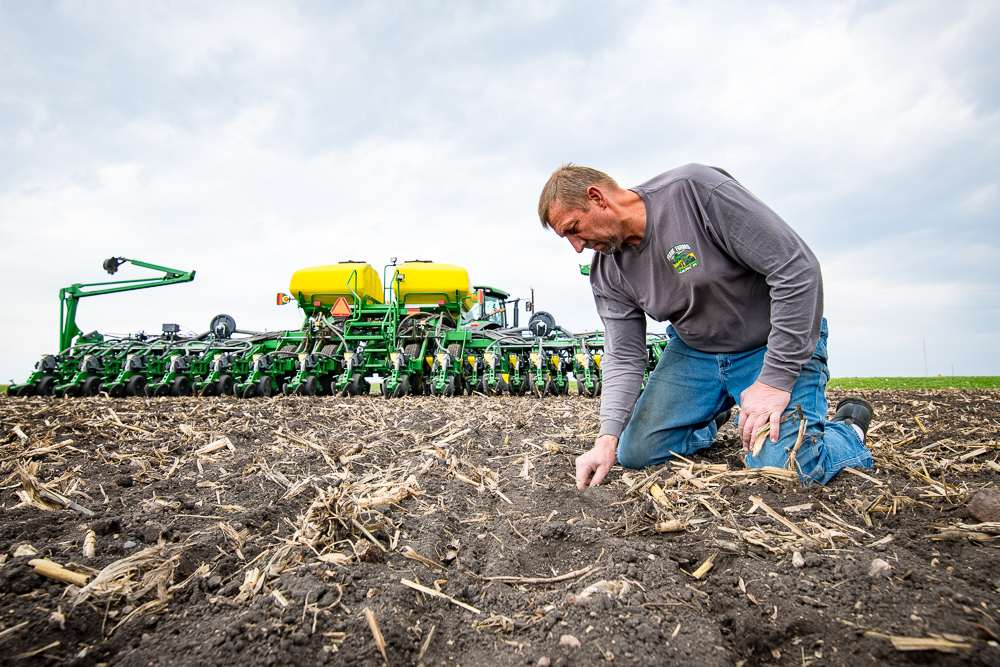
The Research Center for Farming Innovation continues to collect data on seeding rates to help farmers find the optimal populations for their farms. (Joseph L. Murphy/Iowa Soybean Association)
Iowa soybean farmers may find input cost control in seeding rate adjustments
November 23, 2020
Iowa Soybean Association (ISA) research shows farmers can significantly increase profitability via variable rate seeding in soybeans by reducing seed costs and/or raising yield levels. ISA Research Center for Farming Innovation has been collecting data on responses of soybeans seeding rates to aid farmers in making decisions that protect yield and make the most of their inputs.
According to Scott Nelson, ISA senior field service manager, farmers are faced with three questions at planting time:
- What to plant and what variety
- When to plant
- How many seeds to drop
“Farmers want and need to optimize all of their inputs,” said Nelson. “They are open to and seeking new data on all three of those questions. I’d add the question “How low can we go?” when it comes to seeding rates in soybeans.”
To provide perspective, a farmer may usually plant 140,000 seeds per acre with one bag of seed per acre costing about $50. If this farmer plants at 100,000 seeds per acre, their seeding cost per acre drops to about $35 per acre, realizing a $15 an acre in savings.
ISA’s focus has been to understand how soybeans respond to seeding rates across the landscape to better enable variable rate seeding. Nelson said, in the past, researchers have seen where optimum populations on high-yielding soil range from 100,000 to 120,000 plants per acre.
“On sloping or lower-yielding farms, we have seen where higher populations are necessary to capture sunlight and make the soybeans taller for harvestability,” he added.
Nelson said ISA field service managers are still collecting and analyzing 2020 data. This year, one farmer participant’s yield monitor reported 80 bushels per acre at a final population of 60,000 soybean seed per acre. “We aren’t sure if this level of success is repeatable, but we are determined to find out,” he said. Nelson encourages farmers interested in such trials to contact him or any of ISA’s field service managers.
For farmers looking into seeding rates, Nelson offered the following points:
- Shoot for a final stand of 100,000 to 110,000 plants per acre. This is the most conservative recommendation.
- Farmers should experiment with lower seeding rates, say a seed drop of 100,000 plants per acre under normal planting conditions.
- Under later planting scenarios, farmers should target higher stands say 120,000 to 140,000 plants per acre.
- For variable rate seeding recommendations, lower plant populations on the most productive soil. Increase the seeding rate on lower yielding zones within the field.
- In creating variable rate seeding prescriptions, consider past soybean yield history, soil types and topography.
For more information and to learn more from Nelson, contact him at snelson@iasoybeans.com.
Back